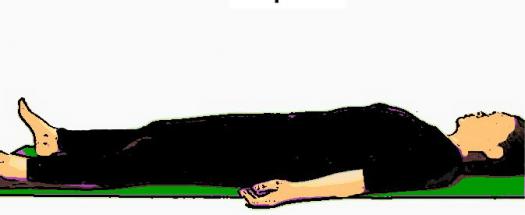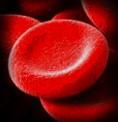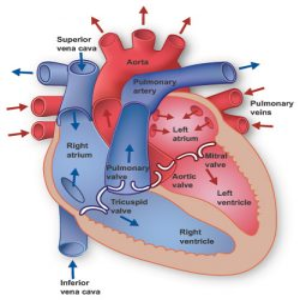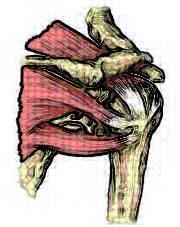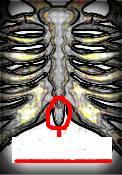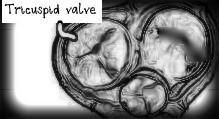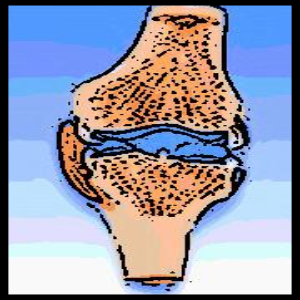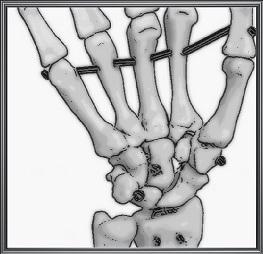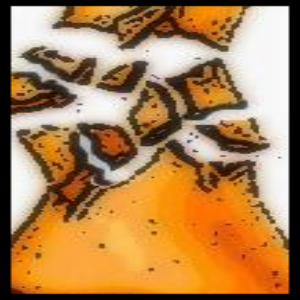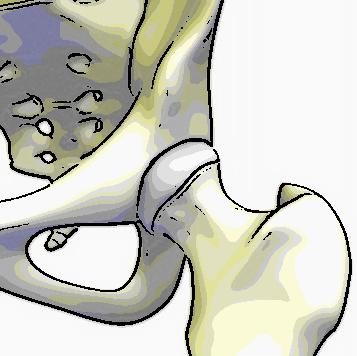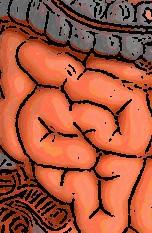MBLEx (Massage & Bodywork Licensing Examination) Practice Test
-
Which of the following is NOT a lateral rotator of the hip?
-
Piriformis
-
Gemellus Superior
-
Semimembranosus
-
Obturator Internus
-
This practice test offers a comprehensive review of the subject matter covered on the MBLEx. Containing questions with explanatory answers (in the feedback section) and illustrations this is an essential review tool for the MBLEx. Includes subjects such as: Anatomy and Physiology, Pathology, Kinesiology, Massage Fundamentals, Ethics, Hydrotherapy and more!. There is no limit to the number of times See morethis test can be taken.

- 2.
A chemical synapse where the muscle fiber and motor neuron meet is called?
-
Neuromuscular junction
-
Myoneural junction
-
Motor Unit
-
Both A & B
Correct Answer
A. Both A & BExplanation
A neuromuscular junction is also known as a myoneural junction.Rate this question:
-
- 3.
In this position the body lies horizontally with the face up?
-
Prone
-
Supine
-
Anatomic
-
Lateral recumbent
Correct Answer
A. SupineExplanation
Supine is the correct answer because it refers to the body position where the person is lying horizontally with the face up. In this position, the person's back is resting against the surface they are lying on, and their face, chest, and abdomen are facing upwards. This position is commonly used in medical examinations and surgeries as it provides easy access to the front of the body.Rate this question:
-
- 4.
Known as "The Father of Swedish Massage".
-
Elizabeth Dicke
-
William Sutherland
-
Per Henrik Ling
-
James Cyriax
Correct Answer
A. Per Henrik LingExplanation
Per Henrik Ling is known as "The Father of Swedish Massage" because he was a Swedish physiologist and fencing master who developed the techniques and principles of Swedish massage in the early 19th century. He combined his knowledge of anatomy and physiology with his expertise in martial arts to create a system of massage that focused on specific strokes and movements to promote relaxation, improve circulation, and relieve muscle tension. Ling's contributions to the field of massage therapy have had a lasting impact and his techniques are still widely practiced today.Rate this question:
-
- 5.
What should you do if a client that has recently undergone chemotherapy comes in for appointment?
-
Do only light touch massage
-
Consult the client’s physician
-
Carry on with a normal pressure massage
-
Refuse to work on the client
Correct Answer
A. Consult the client’s physicianExplanation
Always consult the client’s physician in a case of cancer to make sure you obtain all the information and the physician’s concerns.Rate this question:
-
- 6.
Where is the Popliteal Triangle located?
-
Side of the neck
-
Behind the knee
-
Above the kidneys
-
None of the above
Correct Answer
A. Behind the kneeExplanation
The popliteal triangle is diamond in shape and located on the posterior side of the joint. It is considered an endangerment site due to the tibial nerve and popliteal vein & artery.Rate this question:
-
- 7.
On an average, how many new red blood cells are produced each second?
-
4 million
-
2 million
-
5 million
-
1 million
Correct Answer
A. 2 millionExplanation
Red blood cells have a life span of 120 days before a phagocyte delivers the cell to the liver or spleen.Rate this question:
-
- 8.
What are the two largest veins in the body?
-
Jugular & Femoral
-
Superior & Inferior Vena Cava
-
Superior Vena Cava & Cephalic
-
None of the above
Correct Answer
A. Superior & Inferior Vena CavaExplanation
The largest vein in the body is the inferior vena cava (carries deoxygenated blood from the lower venous circulation to the right atrium). The second largest vein in the body is the superior vena cava (carries deoxygenated blood from the upper venous circulation to the right atrium).Rate this question:
-
- 9.
Which of the following carries oxygen rich blood away from the heart?
-
Capillaries
-
Ventricles
-
Arteries
-
Veins
Correct Answer
A. ArteriesExplanation
Arteries carry oxygen-rich blood away from the heart to the rest of the body. They have thick, elastic walls that help to maintain a steady blood pressure and ensure that oxygenated blood reaches all the tissues and organs. Veins, on the other hand, carry oxygen-depleted blood back to the heart, while capillaries are tiny blood vessels that connect arteries and veins, allowing for the exchange of oxygen and nutrients with the surrounding tissues. Ventricles are the lower chambers of the heart that pump blood out to the arteries.Rate this question:
-
- 10.
What is the primary duty of red blood cells?
-
Clotting
-
Plasma production
-
Transport of gases
-
Filter out impurities
Correct Answer
A. Transport of gasesExplanation
The primary function of red blood cells is the transportation of oxygen to the cells.Rate this question:
-
- 11.
Vitamin D plays a major role in clotting.
-
True
-
False
Correct Answer
A. FalseExplanation
Vitamin K plays a major role in clotting.Rate this question:
-
- 12.
How many chambers are in the heart?
-
3
-
4
-
2
-
6
Correct Answer
A. 4Explanation
The heart has four chambers: the left atrium, left ventricle, right atrium and right ventricleRate this question:
-
- 13.
This protein is most common in plasma.
-
Fibrinogen
-
Globulin
-
Serum Albumin
-
Nitrate
Correct Answer
A. Serum AlbuminExplanation
Albumin accounts for 50-60% of plasma proteins.Rate this question:
-
- 14.
What is the fluid portion of the cytoplasm called?
-
Cytosol
-
Peroxisomes
-
Microvilli
-
None of the above
Correct Answer
A. CytosolExplanation
Cytosol is the aqueous (water is the primary component of cytosol) substance filling the cytoplasm.Rate this question:
-
- 15.
What is the difference between arteries & veins?
-
Veins have thicker muscular walls
-
Veins have valves
-
Arteries have thicker muscular walls
-
Both B & C
Correct Answer
A. Both B & CExplanation
The correct answer is "Both B & C". This means that both veins and arteries have thicker muscular walls and veins have valves. The muscular walls in arteries help to pump oxygenated blood away from the heart to the rest of the body, while the valves in veins prevent blood from flowing backward and assist in returning deoxygenated blood back to the heart. Therefore, both statements B and C are true and explain the difference between arteries and veins.Rate this question:
-
- 16.
What is mitosis?
-
Cell transportation
-
Cell division
-
Lubrication
-
None of the above
Correct Answer
A. Cell divisionExplanation
The primary purpose of mitosis is to replicate and replace old cells.Rate this question:
-
- 17.
Which of the following is NOT an example of lymphocytes?
-
Protect the body against antigens
-
To absorb lipids from the intestine and transport them to the blood
-
To collect and return interstitial fluid to the blood
-
Increase red blood cell production
Correct Answer
A. Increase red blood cell productionExplanation
Lymphocytes are white blood cells generated by the immune system, so their function does not include red blood cell production.Rate this question:
-
- 18.
Which of the following controls heart rhythm?
-
Cardiac center
-
Thymus
-
Ductus Venosus
-
Atria
Correct Answer
A. Cardiac centerExplanation
The cardiac center is responsible for controlling heart rhythm. It is located in the medulla oblongata of the brain and regulates the rate and force of heart contractions. The cardiac center receives input from various sensors in the body, such as baroreceptors and chemoreceptors, and adjusts the heart rate accordingly to maintain homeostasis. It sends signals to the sinoatrial (SA) node, which is the natural pacemaker of the heart, to initiate each heartbeat and ensure a regular rhythm.Rate this question:
-
- 19.
Which of the following is considered the Pacemaker?
-
Left ventricle
-
Right ventricle
-
Sinoatrial Node
-
Parietal Pericardium
Correct Answer
A. Sinoatrial NodeExplanation
The sinoatrial node is considered the pacemaker of the heart. It is a group of specialized cells located in the right atrium. It generates electrical impulses that regulate the heart's rhythm and initiate the contraction of the heart muscles. These impulses travel through the atria, causing them to contract and pump blood into the ventricles. From there, the impulses are conducted to the ventricles, causing them to contract and pump blood out of the heart. Therefore, the sinoatrial node plays a crucial role in maintaining the heart's normal rhythm and function.Rate this question:
-
- 20.
What are the two divisions of the circulatory system?
-
Blood Vascular & Lymph Vascular
-
Blood Vascular & Endocrine
-
Lymph & Endocrine
-
None of the above
Correct Answer
A. Blood Vascular & Lymph VascularExplanation
The circulatory system is divided into two divisions: the blood vascular system and the lymph vascular system. The blood vascular system consists of the heart, arteries, veins, and capillaries, which transport oxygen, nutrients, hormones, and waste products throughout the body. The lymph vascular system, on the other hand, includes lymphatic vessels, lymph nodes, and lymphatic organs, which help in the removal of excess fluids, waste materials, and toxins from the body.Rate this question:
-
- 21.
What is the universal blood donor type?
-
AB
-
O (-)
-
RH (+)
-
RH (-)
Correct Answer
A. O (-)Explanation
The universal blood donor type is O (-) because it lacks both A and B antigens on the red blood cells, making it compatible with all blood types. The negative Rh factor means that the blood does not have the Rh antigen, further increasing its compatibility with a wider range of recipients. This makes O (-) blood type the safest and most commonly used in emergency situations when the recipient's blood type is unknown.Rate this question:
-
- 22.
What is a traveling blood clot called?
-
Embolus
-
Thrombus
-
Platelet
-
WBC
Correct Answer
A. EmbolusExplanation
An embolus is a traveling blood clot that can block blood flow in a blood vessel. It is formed when a thrombus, a stationary blood clot, breaks off and travels through the bloodstream to another part of the body. Once it reaches a narrower blood vessel, it can cause a blockage, leading to serious health issues such as a stroke or pulmonary embolism. Therefore, the correct answer for the term used to describe a traveling blood clot is embolus.Rate this question:
-
- 23.
Which of the following is part of the rotator cuff?
-
Teres Minor
-
Infraspinatus
-
Subscapularis
-
All of the above
Correct Answer
A. All of the aboveExplanation
Supraspinatus is also part of the rotator cuff.Rate this question:
-
- 24.
When is the thymus gland most active?
-
As an adult
-
As a child
Correct Answer
A. As a childExplanation
The thymus gland is largest during childhood and slowly reduces in size as a person ages.Rate this question:
-
- 25.
Which of the following is the largest lymphoid organ?
-
Bone marrow
-
Spleen
-
Liver
-
Adenoid
Correct Answer
A. SpleenExplanation
The spleen is the largest lymphoid organ in the body. It is responsible for filtering and purifying the blood, removing old or damaged red blood cells, and producing white blood cells. The spleen also plays a role in the immune system by producing antibodies and storing immune cells. It is located in the upper left side of the abdomen and is involved in the production and maturation of lymphocytes. The other options listed, such as bone marrow, liver, and adenoid, are not lymphoid organs.Rate this question:
-
- 26.
Erythrocytes live ___ days.
-
100
-
90
-
120
-
80
Correct Answer
A. 120Explanation
At the end of their lifecycle they are consumed by macrophages.Rate this question:
-
- 27.
Which system regulates action of the glands, the heart and smooth muscles?
-
PNS
-
CNS
-
ANS
-
SNS
Correct Answer
A. ANSExplanation
The autonomic nervous system regulates involuntary actions within the body, such as heart rate, respiratory rate and breathing.Rate this question:
-
- 28.
Which endangerment site would you encounter when compressing the sternum?
-
Tibial Tuberosity
-
Styloid Process
-
Xiphoid Process
-
Popliteal Triangle
Correct Answer
A. Xiphoid ProcessExplanation
This is a tiny cartilaginous process of the inferior part of the sternum. Too much pressure applied to the xiphoid process could result in it being fractured or dislocated.Rate this question:
-
- 29.
This is the smallest blood vessel that contains oxygenated blood.
-
Capillary
-
Vein
-
Ventricle
-
None of the above
Correct Answer
A. CapillaryExplanation
Aside from being the smallest blood vessels, the capillaries also connect the arterioles with the venules.Rate this question:
-
- 30.
A decrease of oxygen to tissues.
-
Edema
-
Embolus
-
Hypoxia
-
Septicemia
Correct Answer
A. HypoxiaExplanation
Hypoxia refers to a condition where there is a decrease in the supply of oxygen to the body tissues. This can occur due to various reasons such as reduced oxygen levels in the environment, respiratory disorders, or impaired blood circulation. In the context of the given options, hypoxia is the most appropriate explanation for a decrease in oxygen to the tissues. Edema refers to the accumulation of fluid in tissues, embolus is a blockage in a blood vessel, and septicemia is a severe infection in the bloodstream. None of these options directly explain a decrease in oxygen supply.Rate this question:
-
- 31.
There are ___ different blood types.
-
4
-
8
-
9
-
5
Correct Answer
A. 8Explanation
The eight blood types :
O+
O–
A+
A–
B+
B–
AB+
AB–Rate this question:
-
- 32.
A lack of blood flow to an area, usually referring to the heart.
-
Ischemia
-
Hypoxia
-
Embolus
-
Edema
Correct Answer
A. IschemiaExplanation
Ischemia refers to a condition where there is a lack of blood flow to a specific area, typically the heart. This can occur due to a blockage or narrowing of the blood vessels supplying the area, leading to a reduced oxygen supply. Ischemia can result in tissue damage or cell death if left untreated.Rate this question:
-
- 33.
An excessively quick heartbeat.
-
Murmur
-
Pericarditis
-
Tachycardia
-
Phlebitis
Correct Answer
A. TachycardiaExplanation
Tachycardia refers to an excessively quick heartbeat. It is a condition where the heart beats faster than the normal resting heart rate. This can be caused by various factors such as stress, anxiety, physical exertion, certain medications, or underlying medical conditions. Tachycardia can lead to symptoms like palpitations, dizziness, shortness of breath, and chest pain. It is important to diagnose and treat tachycardia to prevent complications and manage the underlying cause.Rate this question:
-
- 34.
An allergic reaction that results in low blood pressure and difficulty breathing.
-
Anemia
-
Anaphylactic Shock
-
Hypoxia
-
Septic Shock
Correct Answer
A. Anaphylactic ShockExplanation
The onset of anaphylactic shock happens rapidly and can be fatal.Rate this question:
-
- 35.
This is the main artery of the body.
-
Aorta
-
Vagus
-
Venules
-
Capillaries
Correct Answer
A. AortaExplanation
The aorta is the largest artery in the body and is responsible for carrying oxygen-rich blood from the heart to the rest of the body. It is often referred to as the main artery because it branches off into smaller arteries that supply blood to various organs and tissues. The aorta plays a crucial role in maintaining blood flow and delivering essential nutrients and oxygen to the body's cells.Rate this question:
-
- 36.
The tricuspid valve is located between the right ventricle and the __________.
-
Left Atrium
-
Right Atrium
-
Mitral Valve
-
Septum
Correct Answer
A. Right AtriumExplanation
The tricuspid valve is located between the right ventricle and the right atrium. This valve prevents the backflow of blood from the right ventricle to the right atrium during the contraction of the ventricle.Rate this question:
-
- 37.
About how many bones does the average adult body have?
-
300
-
400
-
200
-
450
Correct Answer
A. 200Explanation
The adult body has about 206 bones.Rate this question:
-
- 38.
What is the loss of voluntary muscle function called?
-
Bell’s Palsy
-
Multiple Sclerosis
-
Sickle Cell Anemia
-
Paralysis
Correct Answer
A. ParalysisExplanation
Paralysis can be complete or partial. It can be temporary or permanent and is usually caused by stroke, spinal cord injury or other damage to the nervous system.Rate this question:
-
- 39.
What is the outermost surface of the bone called?
-
Compact
-
Cancellous
-
Periosteum
-
Cartilage
Correct Answer
A. PeriosteumExplanation
The outermost layer of bone is the periosteum. This thin membrane of connective tissue provides blood flow to the bone.Rate this question:
-
- 40.
This is the fluid that lubricates joints.
-
Amphiarthroses
-
Synovial
-
Bursa
-
Diarthrotic
Correct Answer
A. SynovialExplanation
This thick lubricating fluid helps cushion the joints.Rate this question:
-
- 41.
How many bones make up the cervical vertebrae?
-
12
-
7
-
4
-
8
Correct Answer
A. 7Explanation
Located in the neck are the seven cervical vertebrae (C1 to C7). The atlas is the first vertebra (C1) and the axis is the second vertebra (C2).Rate this question:
-
- 42.
Birth defect in which a portion of the spinal cord protrudes through an opening in the vertebrae.
-
Rickets
-
Kyphosis
-
Spinal Bifida
-
Lordosis
Correct Answer
A. Spinal BifidaExplanation
There are three main types of spinal bifida: occulta, meningocele, and myelomeningocele. Occulta is the most common type, with the least serious complications.Rate this question:
-
- 43.
Bones serve as a storage area for which mineral?
-
Iron
-
Phosphorus
-
Copper
-
None of the above
Correct Answer
A. PhosphorusExplanation
The bone stores 85% of the phosphorus. Phosphorus and calcium provide strength and structure to teeth and bones.Rate this question:
-
- 44.
Which of the following is not one of the 8 carpal bones in the wrist?
-
Pisiform
-
Trapezoid
-
Trapezius
-
Trapezium
Correct Answer
A. TrapeziusExplanation
The carpal bones are made up of the Scaphoid, Lunate, Triquetral, Pisiform, Trapezium, Trapezoid, Capitate and Hamate.Rate this question:
-
- 45.
Bone that has been broken into many fragments.
-
Comminuted
-
Compound
-
Compression
-
Greenstick
Correct Answer
A. ComminutedExplanation
Comminuted refers to a bone that has been broken into many fragments. This type of fracture occurs when there is a high force impact on the bone, causing it to shatter into multiple pieces. The fragments may be small or large, and the bone may be completely shattered or partially broken. Comminuted fractures are often more difficult to treat and may require surgery to realign and stabilize the bone.Rate this question:
-
- 46.
The hip is an example of a ball and socket joint. Which movement is NOT an example of this joint?
-
Rotation
-
Abduction
-
Gliding
-
Extension
Correct Answer
A. GlidingExplanation
The ball and socket joint allows the greatest range of motions including flexion, extension, abduction, adduction and rotation.Rate this question:
-
- 47.
Which is NOT part of the small intestine?
-
Duodenum
-
Jejunum
-
Pharynx
-
Ileum
Correct Answer
A. PharynxExplanation
The pharynx is part of the digestive tract. The duodenum, jejunum and Ileum make up the small intestine.Rate this question:
-
- 48.
How many permanent teeth does the average adult have?
-
40
-
37
-
27
-
32
Correct Answer
A. 32Explanation
These includes: 8 incisors, 4 canines, 8 bicuspids and 12 molars.Rate this question:
-
- 49.
Which of the following is a basic process of the digestive system?
-
Ingestion
-
Propulsion
-
Absorption
-
All of the above
Correct Answer
A. All of the aboveExplanation
The basic process of digestion is as follows: Ingestion, propulsion (which includes mechanical & chemical digestion), absorption and elimination.Rate this question:
-
Quiz Review Timeline (Updated): Mar 22, 2023 +
Our quizzes are rigorously reviewed, monitored and continuously updated by our expert board to maintain accuracy, relevance, and timeliness.
-
Current Version
-
Mar 22, 2023Quiz Edited by
ProProfs Editorial Team -
Apr 10, 2014Quiz Created by
Willowservices
 Back to top
Back to top



